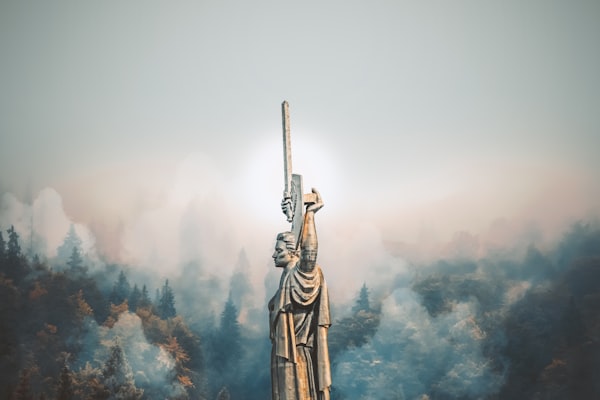Late Review: Sarpatta Paramparai
Agreed it is no Raging Bull or the marvellous Daniel Day-Lewis’ The Boxer, yet there is a certain studied panache to the way Pa Ranjith goes about Sarpatta. Though it peddles in clichés, it is the best sports movie ever made in India

I knew what I had signed up for when I started watching Sarpatta Paramparai. I expected it to be a rehash of the formulaic story of an unlikely hero emerging from the sidelines to upend an established order; an underdog whose meteoric rise is emblematic of the aspirations of the downtrodden; a pugilist whose soaring fame becomes the catalyst of his downfall and his phoenix-like rise from the ashes thereon. And boy! Was I right. In a nutshell, Sarpatta Paramparai peddles in clichés, yet it is the best sports movie ever made in India.
Art with politics embedded to it
Agreed it is no Raging Bull or the marvellous Daniel Day-Lewis’ The Boxer, yet there is a certain studied panache to the way Pa Ranjith goes about Sarpatta. He transports his viewers to the Madras of the 1970s when the city was in throes of a political upheaval. The ease with which he makes Madras the microcosm of Indira’s India and then uses it as a backdrop for his story on the fight for boxing supremacy among the various clans in the city is a testimony to his political sensitivity.
While Sarpatta has drawn criticism from certain quarters, denouncing it as a propaganda vehicle for the party in power in Tamil Nadu, the question remains why can’t art be partisan, yet enlightening and entertaining at the same time? Prism of objectivity should not dictate the hues a ray of light passing through it should scatter into. Any symbolism an auteur’s flourish imprints on a script is a stamp of his creativity, which is as non-negotiable as it is sacrosanct.
Emergency connect
As is the case with Ranjith’s other films, Sarpatta, too, is symbolic of how casteism in its myriad perverse ways denies the deserving their due opportunity and credit. While the nearly three-hour oeuvre is replete with political symbolism, what stood out for me were two scenes of such deep insight that I’m compelled to mention them. First is when coach Rangan, played by the versatile Pasupathy with an ease that is emblematic of an artist becoming one with the character, is readying his protégé Meeran to take on rival clan’s champion Vembuli. It is not coincidental that Meeran dons a gown with DMK’s political emblem’s imprint on it, for Rangan is a devout DMK man; the stripes of the gown worn by Vembuli have an uncanny resemblance to the Congress banner.
The second is when Kabilan played by Arya nearly pummels Vembuli into submission. The scene coincides with Indira Gandhi declaring Emergency and ordering the arrest of her political rivals. The political foul play by Indira Gandhi finds its parallel in the boxing ring where Kabilan is denied a well-deserved victory, and is humiliated instead. It’s a scene for the ages.
Character Analysis
Coming to the characters, the ensemble cast outperforms the protagonist in every scene. And that speaks volumes about the casting, as Arya has done no mean job. Arya as Kabilan is a man enamoured with boxing, but is unwilling to pursue it to a meaningful degree owing to his overbearing mother’s concerns that the sport is a one-way ticket to the world of crime. Arya emerges as a convincing pugilist, but is found wanting when it comes to carrying the weight of the quintessential commoner. The cathartic moments when he seemingly cries his heart out after being beaten by a middling boxer or when he seeks his wife’s forgiveness for his wayward ways lack the dexterity of, say, a virtuoso and come across as amateurish.
John Vijay as Daddy is both likeable and lovable. He pulls off the character of an Anglo Indian with ease and is a steady reminder of the fact that gross one-liners need not be a must ingredient for comic element. Daddy’s portrayal reminded me of a former colleague from North Chennai; the mannerisms were impeccable.
The only character I did not find convincing was of Bakkiyam played by Anupama Kumar. Her emotional range was of a teaspoon and expressions limited to a perennial scowl. Agreed hers was a character bogged down by the pressures of being a single-mother, attempting to protect her son from the fate her husband met with, but she manifested a singular lack of range and her presence neither evoked camaraderie nor empathy.
The depiction of Arya’s slide from a promising boxing star into mercenary at Rangan’s son’s beck and call is poignantly captured. The potbelly Kabilan is left with after his transformation and the wistful look before leaving behind the punching bag is a telling commentary on how caste, class fault lines nip talents in the bud. Especially hard on the heart are the scenes where he turns into an alcoholic and beats up his mother and then gets too drunk to defend himself from the goons sent by his rival.
Dushara Vijayan as Laxmi is cast perfectly. Her attempts to reconcile Kabilan’s passion for boxing with her own desires as a newlywed is convincing. However, she is no pushover. She puts her foot down when Kabilan accords more importance to boxing than to her; she also is instrumental in pulling Kabilan from the brink of ignominy once his slide reaches its nadir.
Best cinematic fight
Now to the best part. Which is the best cinematic fight you have ever watched? For me, it used to vacillate between the Chuck Norris-Bruce Lee fight in The Way of the Dragon, the Rocky Balboa-Apollo Creed bout in Rocky II and the Achilles-Hector duel in Troy. That was before I had met one Dancing Rose. One hour and eleven minutes into the cinema, you are treated to a bout that is better than the two Kabilan has with Vembuli, including the title clash. Dancing Rose played by Shabeer Kallarakkal, hitherto limited to playing Vembuli’s sidekick, emerges from the sidelines and sweeps the viewers off their feet.
Such is his screen presence in the nearly five-minute bout sequence that when he falls, it seems as though something beautiful has been nipped in the bud. No director, in my knowledge, before Pa Ranjith had been able to epitomise the legendary pugilist Muhammad Ali’s dance-like-a-butterfly, sting-like-a-scorpion dictum on screen primarily because they never had a Dancing Rose to pull it off. His defeat somehow stings and he further endears himself to the viewers with his staunch belief in playing in the right spirit. He is the first to castigate Vembuli for his questionable tactics to deny Kabilan his well-earned victory, and also the only one to console Vembuli when he loses the title clash after putting up a spirited fight. If ever there was a character that stole the protagonist’s thunder, it has to be Dancing Rose.
Flaws aplenty
However, Sarpatta is not without its flaws. There are scenes that could have done well with some tighter editing. Arya’s reformation under Beedi Rayappan seemed like Ranjith was stretching the strain, and the fight with goons sent by Raman’s uncle came across as unnecessary. The song sequences could have been done away with to give us a Karti-starrer Kaidhi like feel. Murali G’s cinematography is brilliant. The action sequences are beautifully choreographed and captured. Add to that Santhosh Narayan’s captivating background score and you have a worthy rival to almost any Hollywood sports cinema.
Ranjith’s Sarpatta is a heady mix of sports drama and social commentary garbed in the sepia tones of a stinging period in Indian history. Any person aspiring to understand the run-up to or the aftermath of Emergency must place this work of art high on their wishlist. If it was Chak De that reinvented the sports movie genre in India, Sarpatta is its crowning jewel, difficult to equal and possibly impossible to topple.




